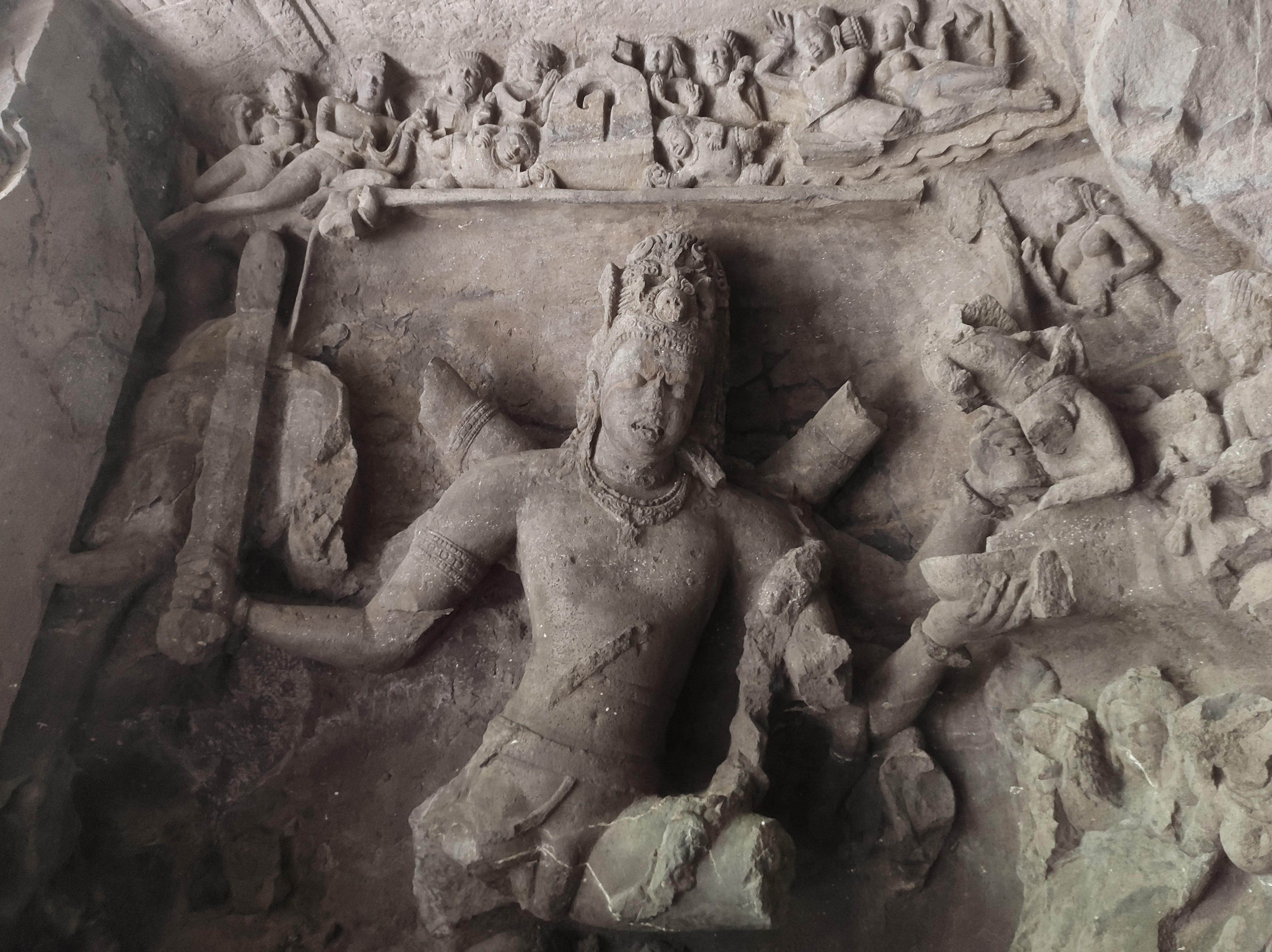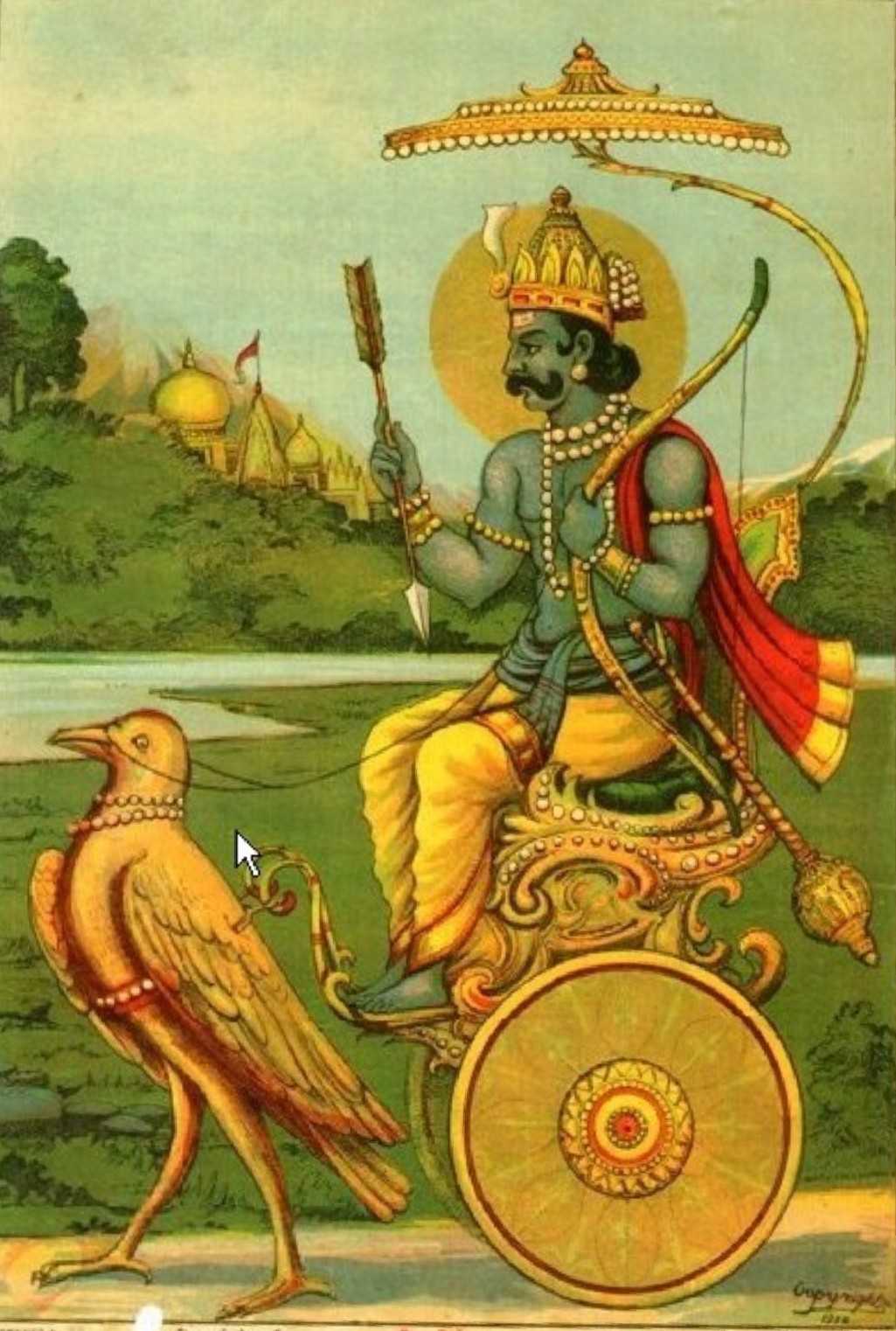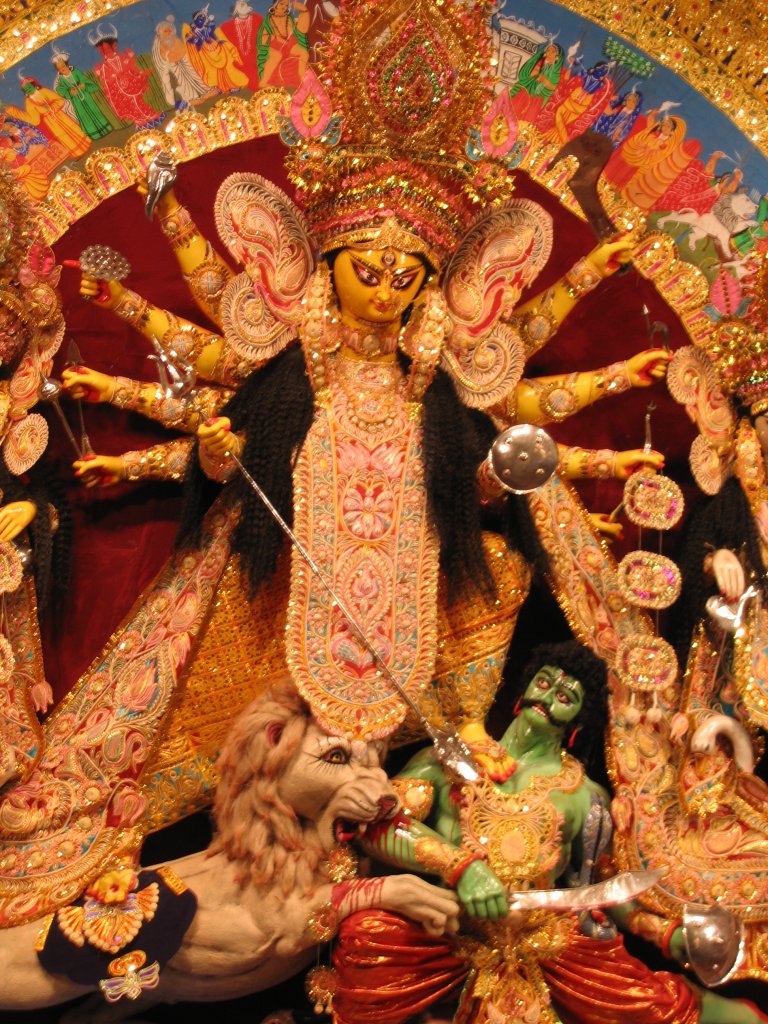|
Kailasanathar Temple, Udayalur
Kailasanathar Temple, is a Siva temple in Udaiyalur at Kumbakonam takuk in Thanjavur District in Tamil Nadu (India). Presiding deity The presiding deity is known as Kailasanathar. His consort is known as Sankaraparvathi Ambal. Speciality From the inscriptions of Kulottunga I, Vikrama Chola, Rajaraja II, Rajathiraja II, Kulothunga Chola III, Rajaraja III and Sadayavarman Sundarapandian it is learnt that this temple was patronised by them. A sculpture of a devotee is found under the feet of Dvarapala found at the entrance of sanctum sanctorum. There is also another sculpture of a devotee in worshipping pose. In no other temple such sculptures are found. Palkulatti Amman Temple and Selvamaha Kalliamman Temple are the temples of village Amman deities of this place. Structure This temple has sanctum sanctorum of presiding deity and the goddess. There are also front mandapa and prakara. Next to the entrance in the right side the sanctum sanctorum is found. In front of mandapa shr ... [...More Info...] [...Related Items...] OR: [Wikipedia] [Google] [Baidu] |
Vinayaka
Ganesha or Ganesh (, , ), also known as Ganapati, Vinayaka and Pillaiyar, is one of the best-known and most worshipped Deva (Hinduism), deities in the Hindu deities, Hindu pantheon and is the Supreme God in the Ganapatya sect. His depictions are found throughout India. Hindu denominations worship him regardless of affiliations. Devotion to Ganesha is widely diffused and extends Ganesha in world religions, to Jains and Buddhists and beyond India. Although Ganesha has many attributes, he is readily identified by his Asiatic Elephant, elephant head and four arms. He is widely revered, more specifically, as the remover of obstacles and bringer of good luck; the patron of The arts, arts and Science, sciences; and the Deva (Hinduism), deva of intellect and wisdom. As the god of beginnings, he is honoured at the start of rites and ceremonies. Ganesha is also invoked during writing sessions as a patron of letters and learning., Vigna means obstacles Nasha means destroy. These ideas ar ... [...More Info...] [...Related Items...] OR: [Wikipedia] [Google] [Baidu] |
Puja (Hinduism)
() is a worship ritual performed by Hindus to offer devotional homage and prayer to one or more deities, to host and honour a guest, or to spiritually celebrate an event. It may honour or celebrate the presence of special guests, or their memories after they die. The word ''puja'' is roughly translated into English as 'reverence, honour, homage, adoration, or worship'.पूजा ''Sanskrit Dictionary'', Germany (2009) ''Puja'' (পুজো / পুজা in Bengali language, Bangla), the loving offering of light, flowers, and water or food to the divine, is the essential ritual of Hinduism. For the worshipper, the divine is visible in the image, and the divinity sees the worshipper. The interaction between human and deity, between human and guru, is called a ''Darshan (Indian re ... [...More Info...] [...Related Items...] OR: [Wikipedia] [Google] [Baidu] |
Bhairava
Bhairava (, ), or Kāla Bhairava, is a Shaivite and Vajrayāna deity worshipped by Hindus and Buddhists. In Shaivism, he is a powerful manifestation, or avatar, of Shiva.Kramrisch, Stella (1994). ''The Presence of Śiva''. Princeton, NJ: Princeton University Press. p. 471. In the tradition of Kashmir Shaivism, Bhairava represents the Supreme Reality, synonymous to Para Brahman. Generally in Hinduism, Bhairava is also called Dandapāni (" e who holds thedanda in ishand"), as he holds a rod or ''danda'' to punish sinners, and Svaśva, meaning, "he whose vehicle is a dog". In Vajrayana Buddhism, he is considered a fierce emanation of boddhisatva Mañjuśrī, and also called Heruka, Vajrabhairava, Mahākāla and Yamantaka. Bhairava is worshipped throughout India, Nepal, Indonesia, Sri Lanka, and Japan, as well as in Tibetan Buddhism. Etymology Bhairava originates from the word ''bhīru'', which means "fearsome". Bhairava means "terribly fearsome form". It is also kn ... [...More Info...] [...Related Items...] OR: [Wikipedia] [Google] [Baidu] |
Lingam
A lingam ( , lit. "sign, symbol or mark"), sometimes referred to as linga or Shiva linga, is an abstract or Aniconism, aniconic representation of the Hinduism, Hindu Hindu deities, god Shiva in Shaivism. The word ''lingam'' is found in the Upanishads and Indian epic poetry, epic literature, where it means a "mark, sign, emblem, characteristic", the "evidence, proof, symptom" of Shiva and Shiva's power. The lingam of the Shaivism tradition is a short cylindrical pillar-like symbol of Shiva, made of stone, metal, gem, wood, clay or precious stones. It is often represented within a disc-shaped platform, the ''yoni'' – its feminine counterpart, consisting of a flat element, horizontal compared to the vertical lingam, and designed to allow liquid offerings to drain away for collection. The ''lingam'' is an emblem of generative and destructive power. While rooted in representations of the male sexual organ, the ''lingam'' is regarded as the "outward symbol" of the "formless reali ... [...More Info...] [...Related Items...] OR: [Wikipedia] [Google] [Baidu] |
Shani
Shani (, ), or Shanaishchara (, ), is the divine personification of the planet Saturn in Hinduism, and is one of the nine heavenly objects ( Navagraha) in Hindu astrology. Shani is also a male Hindu deity in the Puranas, whose iconography consists of a figure with a dark complexion carrying a sword or danda (sceptre) and sitting on a buffalo or some times on a crow. He is the god of ''karma'', justice, time and retribution, and delivers results depending upon one's thoughts, speech, and deeds. Shani is the controller of longevity, misery, sorrow, old age, discipline, restriction, responsibility, delays, ambition, leadership, authority, humility, integrity, and wisdom born of experience. He also signifies spiritual asceticism, penance, discipline, and conscientious work. He is associated with two consorts: Neela, the personification of the gemstone sapphire, and Manda, a gandharva princess. Planet ''Shani'' as a planet appears in various Hindu astronomical texts in Sanskrit, ... [...More Info...] [...Related Items...] OR: [Wikipedia] [Google] [Baidu] |
Navagraha
The navagraha are nine heavenly bodies and deities that influence human life on Earth according to Hinduism and Hindu mythology. The term is derived from ''nava'' ( "nine") and ''graha'' ( "planet, seizing, laying hold of, holding"). The nine parts of the navagraha are the Sun, Moon, planets Mercury, Venus, Mars, Jupiter, and Saturn, and the lunar node, two nodes of the Moon. The term ''planet'' was applied originally only to the five planets known (i.e., visible to the naked eye) and excluded the Earth. The term was later generalized, particularly during the Post-classical history, Middle Ages, to include the sun and the moon (sometimes referred to as "lights"), making a total of seven planets. The Seven days of the week#Hindu tradition, seven days of the week of the Hindu calendar also corresponds with the seven classical planets and European culture also following same patron and are Names of the days of the week#Hindu tradition, named accordingly in most languages of the India ... [...More Info...] [...Related Items...] OR: [Wikipedia] [Google] [Baidu] |
Chandeshvara Nayanar
Chandesha or Canda or Chandikeshwara is one of the 63 Nayanars. Processional bronze images of him generally show him as a boy, with entwined locks of hair, standing with his hands in Añjali Mudrā and with an axe in the crook of his arm. In the Shaiva temples of South India, his shrine is positioned within the first enclosure wall of the temple complex and to the North East of the lingam. He is there typically shown seated, with one leg dangling downwards, a hand on one thigh and an axe clasped in the other. He faces inwards towards the main temple wall. He is depicted as deeply lost in meditation, and devotees snap their fingers or clap their hands to attract his attention. Another explanation, since he is considered to be the guardian of the temple belongings, is that devotees clap their hands to show that they are leaving the temple empty-handed. It is also customary to leave even the sacred ash inside the temple itself. His original role was probably that of recipient of ''ni ... [...More Info...] [...Related Items...] OR: [Wikipedia] [Google] [Baidu] |
Durga
Durga (, ) is a major Hindu goddess, worshipped as a principal aspect of the mother goddess Mahadevi. She is associated with protection, strength, motherhood, destruction, and wars. Durga's legend centres around combating evils and demonic forces that threaten peace, prosperity, and dharma, representing the power of good over evil. Durga is believed to unleash her divine wrath against the wicked for the liberation of the oppressed, and entails destruction to empower creation. Durga is seen as a motherly figure and often depicted as a beautiful woman, riding a lion or tiger, with many arms each carrying a weapon and often defeating demons. She is widely worshipped by the followers of the goddess-centric sect, Shaktism, and has importance in other denominations like Shaivism and Vaishnavism. The most important texts of Shaktism, Devi Mahatmya and Devi Bhagavata Purana, revere Devi (the Goddess) as the primordial creator of the universe and the Brahman (ultimate truth and reali ... [...More Info...] [...Related Items...] OR: [Wikipedia] [Google] [Baidu] |
Brahma
Brahma (, ) is a Hindu god, referred to as "the Creator" within the Trimurti, the triple deity, trinity of Para Brahman, supreme divinity that includes Vishnu and Shiva.Jan Gonda (1969)The Hindu Trinity, Anthropos, Bd 63/64, H 1/2, pp. 212–226.Jan Gonda (1969)The Hindu Trinity, Anthropos, Bd 63/64, H 1/2, pp. 218–219. He is associated with creation, knowledge, and the ''Vedas''. Brahma is prominently mentioned in Creation myth, creation legends. In some ''Puranas'', he created himself in a golden embryo known as the Hiranyagarbha. Brahma is frequently identified with the Rigvedic deities, Vedic god Prajapati.;David Leeming (2005), The Oxford Companion to World Mythology, Oxford University Press, , page 54, Quote: "Especially in the Vedanta Hindu Philosophy, Brahman is the Absolute. In the Upanishads, Brahman becomes the eternal first cause, present everywhere and nowhere, always and never. Brahman can be incarnated in Brahma, in Vishnu, in Shiva. To put it another way, eve ... [...More Info...] [...Related Items...] OR: [Wikipedia] [Google] [Baidu] |
Agastya
Agastya was a revered Indian sage of Hinduism. In the Indian tradition, he is a noted recluse and an influential scholar in diverse languages of the Indian subcontinent. He is regarded in some traditions to be a Chiranjivi. He and his wife Lopamudra are the celebrated authors of hymns 1.165 to 1.191 in the Sanskrit text ''Rigveda'' and other Vedic literature. Agastya is considered to be the father of Siddha medicine. Agastya appears in numerous itihasas and Puranas including the major ''Ramayana'' and ''Mahabharata''. He is one of the seven most revered rishis (the Saptarishi) in the Vedic texts, and is revered as one of the Tamil Siddhar in the Shaivism tradition, who invented an early grammar of the Old Tamil language, Agattiyam, playing a pioneering role in the development of Tampraparniyan medicine and spirituality at Saiva centres in proto-era Sri Lanka and South India. He is also revered in the Puranic literature of Shaktism and Vaishnavism. He is one of the Ind ... [...More Info...] [...Related Items...] OR: [Wikipedia] [Google] [Baidu] |
Dakshinamurthy
Dakshinamurti () is an aspect of the Hindu god Shiva as a guru (teacher). He is regarded to be the personification of the supreme or the ultimate awareness, understanding, and knowledge. Dakshinamurti represents Shiva as a teacher of yoga, music, and wisdom, offering an exposition of the ''Shastras''. He is worshipped as the god of wisdom and meditation. Meaning Dakshinamurti literally means 'one who is facing south ()' in Sanskrit. According to another school of thought 'Dakshinya' means Karuna in Sanskrit or kindness (benevolence). So this manifestation of Shiva is a benevolent teacher who accords wisdom to seekers of salvation. In most of the Shiva temples, the stone image of Dakshinamurti is installed, facing south, on the southern circumambulatory path around the sanctum sanctorum. Depiction In his aspect as Jnana Dakshinamurti, Shiva is generally shown with Chaturbhuja, four arms. He is depicted seated under a Banyan, banyan tree, facing the south. Shiva is seated ... [...More Info...] [...Related Items...] OR: [Wikipedia] [Google] [Baidu] |










